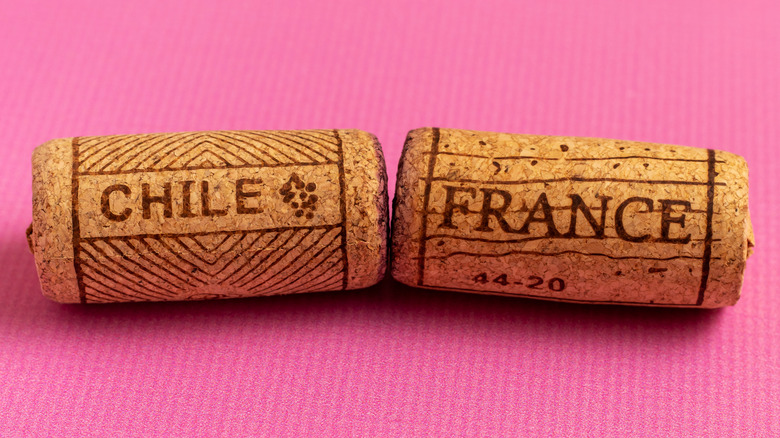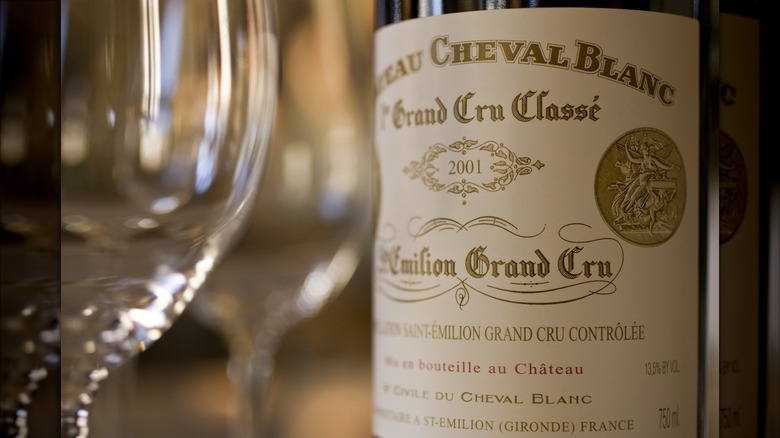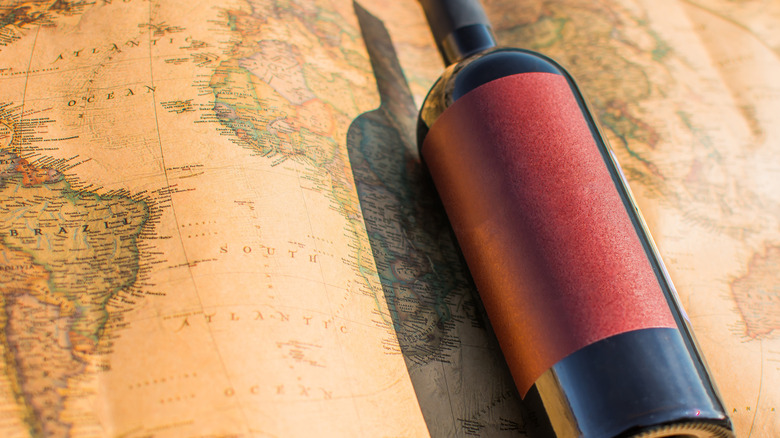The Difference Between Old And New World Wines
Wine can be described as sulfite-free, full-bodied, biodynamic, terroir-driven, fruit-forward, tannic, oaked, unoaked ... and the list goes on. This terminology can be informative, but also intimidating. The same can be said for the terms "old world" and "new world." Whether you're visiting a winery for a tasting or perusing the placards at your local wine shop, these terms are bound to come up. At its core, this distinction categorizes wines into two broad buckets based on their winemaking traditions — old world wines generally being from Western Europe and new world wines from everywhere else. But just like fine wine, wine classification is more complex.
These terms carry more than just notes of climate, geography, and winemaking practices; they also bring with them colonialist undertones that have led to the reconsideration of their use in the wine community. Recognizing this, the Court of Master Sommeliers announced via a 2023 newsletter that it will no longer use these terms in its materials, signaling a shift towards a more inclusive and precise language in describing wine. As a consumer of wine, this change underscores the importance of understanding wine's sensory characteristics and the historical and cultural contexts that shape our enjoyment of it.
Wines of the new, old, and ancient worlds
Before the old world, there was the ancient world — a term we hear often, but deserves highlighting. In places like Greece, Georgia, Egypt, and Turkey, people grew Vitis vinifera (the wine grape) and made wine long before it reached Western Europe.
The old world of wine includes France, Italy, Portugal, Spain, Germany, Hungary, and Croatia. These regions developed strong winemaking traditions, emphasizing terroir — the unique environment where the grapes grow, which imparts distinct flavors to the wine. (Similar to the regional variations in Scotch whisky.) Old world wines are often understood as having low alcohol levels, light body, high acidity, subtle fruit flavor, and mineral notes. Many also have strict regulations governing production and labeling, such as France's Appellation d'origine contrôlée (AOC). In other words, when you open a bottle of French Champagne or Burgundy authenticated by the label, you can trust that it's from where it says it is.
New world wines cover a broad area, including the Americas, Australia, and parts of Africa and Asia. In many cases, winemaking traditions sprung up in areas that were colonized, where people borrowed old traditions and grape varietals to forge their own paths. Although many of these regional wines are not what we could consider new today (like the grapevines planted in South Africa or Virginia during the 1600s), they are often associated with modern technology like climate-controlled storage. As a result, it's often said that they are higher in alcohol and more fruit-forward.
Navigating the nuances of contemporary wine choices
While the labels "old world" and "new world" offer a basic framework for understanding wine, they often don't capture the full story, especially as winemaking evolves with changing climates and consumer preferences. For instance, old world vintners are increasingly embracing techniques once considered exclusive to the new world, such as temperature-controlled fermentation and the use of modern barrels. Even strict wine guidelines are being updated; Bordeaux's regulations were redrawn in 2021 to include grape varieties better suited to today's warmer climate.
Take Chardonnay for example — originating from Burgundy, France (an old world region) it's traditionally known for its mineral and crisp qualities. Yet, when Chardonnay is grown in new world regions like California, it often presents richer, fruit-forward flavors due to the warmer climate. However, this distinction blurs in cool-climate areas like Oregon, where Chardonnay can closely resemble the flavor profile of its French ancestors. This crossover shows how winemaking choices and climate significantly influence a wine's characteristics, challenging the old/new world dichotomy.
Given these nuances, including the impact of climate on wine flavor, the old and new world labels may not always be the most helpful or accurate ways to talk about wine. When looking at a wine label or chatting with a sommelier, consider the grape varietal, where the wine was grown, how it was produced, and how you want the final product to taste. Embracing the complexity can offer a richer wine-tasting experience than relying solely on traditional classifications alone.


